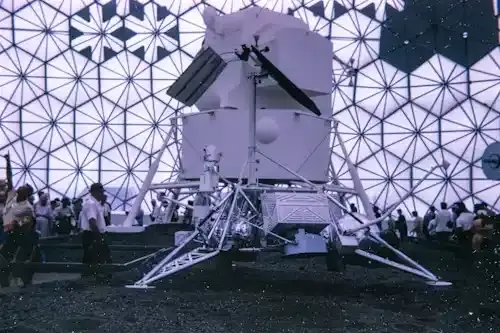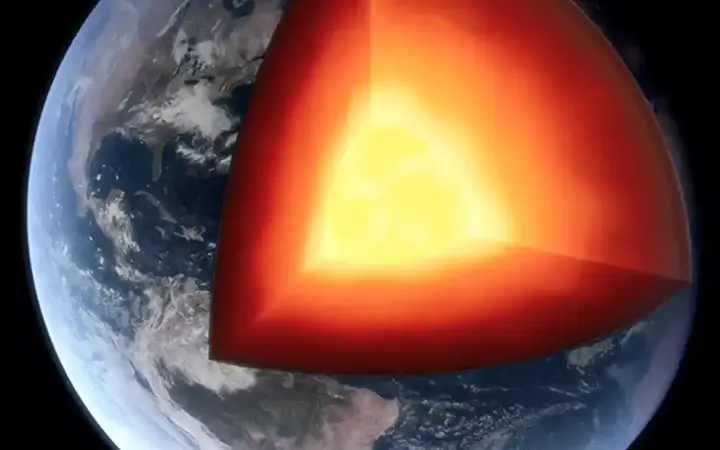Due to lack of funding, old NASA may be on an unsustainable path
A recently published report has raised serious questions about NASA's ability to function effectively as the country's most prominent space agency. The 218-page document, compiled by the National Academies of Sciences, Engineering and Medicine (NASEM) at congressional request, warned that NASA prioritizes short-term missions and commercial contracts over people and technology that make its extraordinary activities possible. According to the report, the space agency's focus on short-term victories and over-reliance on private contractors – whether by choice or under external pressures, including the budget – comes at the expense of deteriorating infrastructure and the migration of talented staff.
Recommend
The case of NASA

The NASA report paints a picture of an agency in turmoil from top to bottom. Internal and external pressure from NASA and its benefactors has put the agency in a somewhat difficult position. Senior managers of the agency's centers told researchers that they would rather spend additional funding on new tasks rather than maintaining facilities or training staff. But according to the U.S. Commission on Human Space Flight, NASA spends about $3 billion annually on missions it can't afford. In short, the agency's workload expands more rapidly than its mission budget – this absorbs money that could be better spent elsewhere. NASA's infrastructure is essential to the agency's mission and is used by other agencies and private sector partners. But "chronic inadequate funding" has led to about 83 percent of the agency's facilities, many of which were built in the sixties, exceeding their design life. These old assets are difficult to maintain, consume valuable staff time, and make NASA less attractive to potential talent. According to the report, NASA's employee turnover is largely consistent with the commercial space industry. But agency employees cited low salaries and greater private sector participation as a deterrent to work there. In addition, NASEM found that women and minorities are underrepresented, leaving a lot of talent untapped. The researchers fear that the proliferation of certain commercial contracts, such as fixed-price or achievement-based contracts, could make matters worse by turning NASA engineers into contract monitors. These agreements stifle agency staff by reducing manual labor while opening the door for private companies to develop technology that, in NASEM's view, must be built internally.
Tight budget

NASA's tendency to prioritize short-term missions over long-term success stems in part from a constrained budget environment. Between 2014 and 2023, the Agency's funding actually increased at a rate of more than 3% from the previous year. But over the past two decades, its purchasing power has remained essentially constant as the complexities of the task have grown. During the height of the Apollo program, NASA estimates that purchasing power was almost three times higher. The 2023 debt ceiling agreement outlined increases in discretionary federal nondefense funding for fiscal years 2024 and 2025, and NASA felt the impact. Its budget for 2024 left it about half a billion less than in 2023. The 8.5% discrepancy between what the agency requested and what it received was the largest since 1992. The funding cuts give NASA little room to maneuver for missions like the Mars Sample Return, which the agency has asked for help from the private sector to cut costs. Another high-profile program, the Chandra X-ray Observatory, has been put on the cutting table, and many others have been postponed. It could be a similar story in 2025. NASA's 2025 White House budget request, which seeks the same amount granted in 2023, was determined by the House and Senate appropriation committees, where the latter's proposal was more appropriate. Under the House budget, NASA will receive $200 million less than required, a slight increase from 2024 in real dollars but below the current inflation rate. The biggest loser will be the Directorate of Scientific Missions, which will receive $7.3 billion — the same allocation as 2024, marking NASA's first scientific budget cut in a decade. A coalition of scientific organizations and more than 40 members of Congress believe the agency needs nearly $9 billion to support dozens of its space science missions.
Houston, do we have a problem?

NASA's budget problems have been well documented. However, the NASA report raises new concerns about how the agency is using the little it receives. It's not all NASA's fault — for example, the agency's efforts to scale back Mars samples face opposition from the House of Representatives. If NASA had to divert funding from other projects to support this mission, Congress was to blame directly. But the report does not exempt the agency from scrutinizing its own shortcomings. Although lawmakers control the budget, neglecting long-term mission planning and not being able to produce accurate cost and schedule estimates is approaching inefficiency. The infrastructure and technology are outdated. Private companies capture talent more quickly than NASA can produce. Given the pressure the Agency faces internally from the Government and its contractors, it is unlikely that these issues will be resolved on their own without some serious efforts. The hope is that adopting the most appropriate budget bill in the Senate, and raising the spending cap in 2026, will give the agency some much-needed support. But NASA's fortunes will also depend on reassessing its priorities.
![]()
Saving and portfolio diversification - concepts you should know
Saving & Financial Portfolios Diversity - Concepts you should know more- ADVERTISEMENT
![]()
Success Guide - How to Create Your Own Charisma?
Success Guide - How to Create Your Own Charisma? more- ADVERTISEMENT
![]()
The Hundred Years War: A Comprehensive Overview
The Hundred Years' War reshaped England and France through fierce battles, bold claims to thrones, and shifting power. From iconic victories like Agincourt to Joan of Arc’s rise, this long conflict helped forge national identities and modern warfare, leaving a lasting mark on European history. more- ADVERTISEMENT
![]()
Mount St. Helens blast and rebirth
Mount St. Helens, once the site of a devastating eruption in 1980, has become a powerful symbol of nature’s resilience. Despite the destruction, life slowly returned, turning a barren land into a thriving ecosystem once again. Today, it stands as both a natural wonder and an educational destination. more- ADVERTISEMENT
![]()
The dark side of early retirement
Early retirement sounds dreamy, but it's not all sunshine—many do it because they’re unhappy at work, feel hopeless, or want more time. But the risks are real: loneliness, regret, running out of money, and losing purpose. Think twice before jumping ship too early. more- ADVERTISEMENT
![]()
Shocking fact: the moon is moving away from the earth!
The Moon is slowly drifting from Earth—about 3.8 cm a year—thanks to tidal friction. This tiny shift, tracked since NASA's Apollo missions, may eventually lengthen our days. Don't worry though; the Moon won't escape. It'll settle into a stable distance over time. more- ADVERTISEMENT
![]()
The ten most lonely things in the world
The loneliest whale in the world sings at a frequency no other whale can hear. The only tree in a 400 km stretch of desert was hit by a drunk driver. A little robot named Curiosity sings “Happy Birthday” to itself every year on Mars. more- ADVERTISEMENT
![]()
A piece of the earth's crust is missing, and scientists are discovering its whereabouts!
A piece of the earth's crust is missing, and scientists are discovering its whereabouts! more- ADVERTISEMENT
![]()
Is time travel possible? Astrophysicist explains the science behind science fiction
Time travel fascinates us, but science shows it’s tricky. Einstein’s theory reveals time slows down at high speeds—astronaut Scott Kelly aged slightly slower than his twin Mark. Wormholes might allow time jumps, but they remain unproven. For now, telescopes offer a glimpse into the past, not time machines. more- ADVERTISEMENT
![]()
Habits of remarkably calm people
Remarkably calm people aren't born that way—they build habits like mindfulness, deep breathing, and regular exercise to stay composed. They also focus on positive thinking, good sleep, and managing time well. These simple yet powerful habits help them stay cool even when life gets stressful. more- ADVERTISEMENT





















